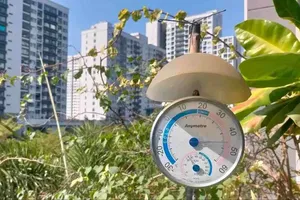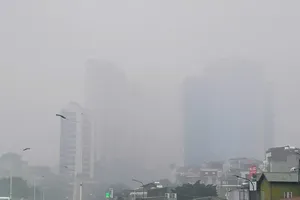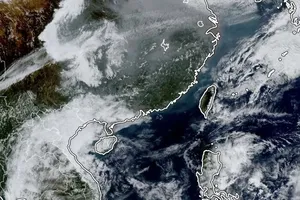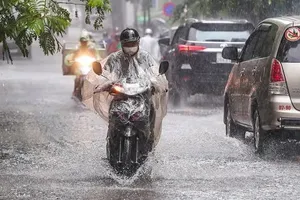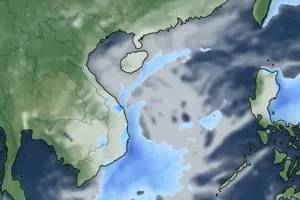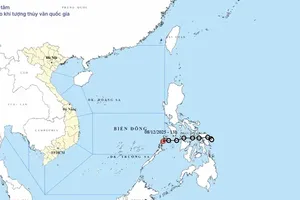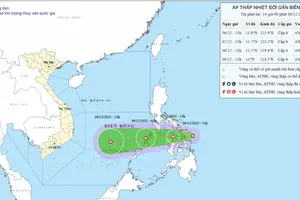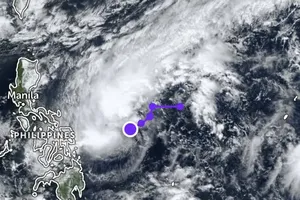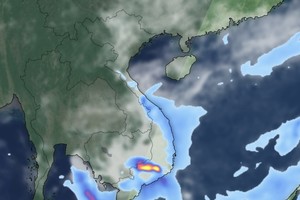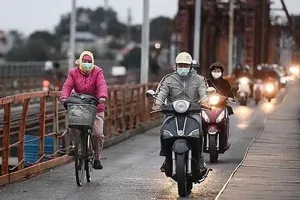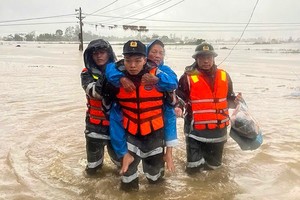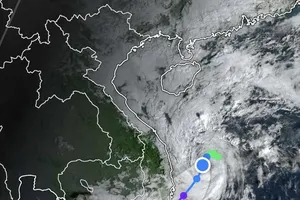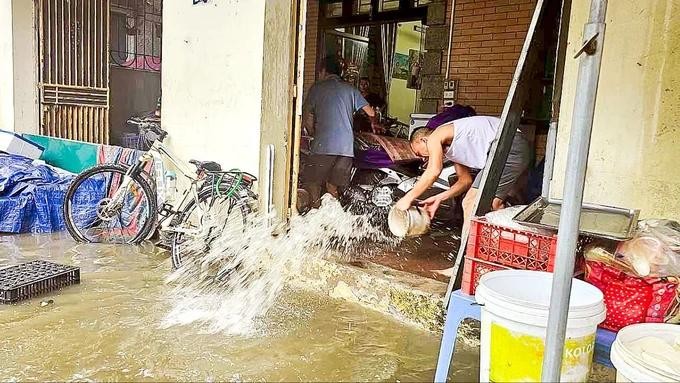
The National Center for Hydro-Meteorological Forecasting reported that the average rainfall during the morning hours (5-8 a.m.) ranged from 30 to 60 mm, with certain areas receiving over 90 mm.
Several major streets in Hanoi were heavily flooded, including Nguyen Xien, Dong Me, Minh Khai, Lang, Phan Boi Chau, Kim Ma, Duy Tan, Phung Hung, Nguyen Chi Thanh, Thuy Khue, and Hoa Bang. At key intersections such as Phan Boi Chau–Ly Thuong Kiet, Duong Thanh–Bat Dan–Nha Hoa, and along Thang Long Avenue, floodwaters reached depths of 40 to 60 centimeters. In many of these areas, residents were forced to wade through the water, and numerous vehicles stalled.
Some apartment buildings and underground parking lots were also inundated, resulting in considerable damage.
The immediate trigger of the substantial precipitation stems from the collaborative interaction between a feeble frigid air formation descending from the north, and an easterly airstream transporting humidity from the Gulf of Tonkin. Within the high humidity air mass, low-level wind convergence (below 1,500m) facilitated the development of deep convective clouds, resulting in heavy shower activity.
Furthermore, the urban heat island effect contributed to the vertical transport of water vapor accumulated during the day, promoting condensation as it ascended into the cooler upper atmosphere.
Experts indicate that the primary reason for the significant flooding in Hanoi at the onset of the rainy season is the inadequacy of technical infrastructure. Although the rainfall was not excessive, the drainage system failed to expel water efficiently. Numerous sewers have deteriorated and become blocked due to the prolonged buildup of debris and mud, while the urban landscape has been paved over, losing its capacity to absorb water. Areas that were once natural reservoirs, such as Nguyen Xien, Dong Me, and Minh Khai, have transformed into flood-prone zones during rainfall.
Hanoi Drainage Company reported that it had mobilized personnel early and deployed pumps to the most severely flooded areas. However, the intensity of the rainfall over a short period made the situation difficult to manage, and by midday, many streets remained partially submerged.
According to data collected by a new-generation automatic rain gauge system (Vrain), widespread moderate to heavy rain is expected from the North to Hue on May 1. As of yesterday afternoon, 30 provinces and cities have experienced rainfall, with the heaviest amounts recorded in Tuyen Quang (104.8mm), Thai Nguyen (96.2mm), Ha Giang (95.4mm), Bac Giang (86.2mm), and Bac Kan (78.6mm).
The National Center for Hydro-Meteorological Forecasting reports that Ho Chi Minh City and the South region will see an end to the heat wave from May 2. From May 2 to 8, many areas can expect afternoon or evening seasonal rain, with daytime conditions remaining sunny or hot in some localities. A more pronounced precipitation period is expected to commence from mid-May onwards.
